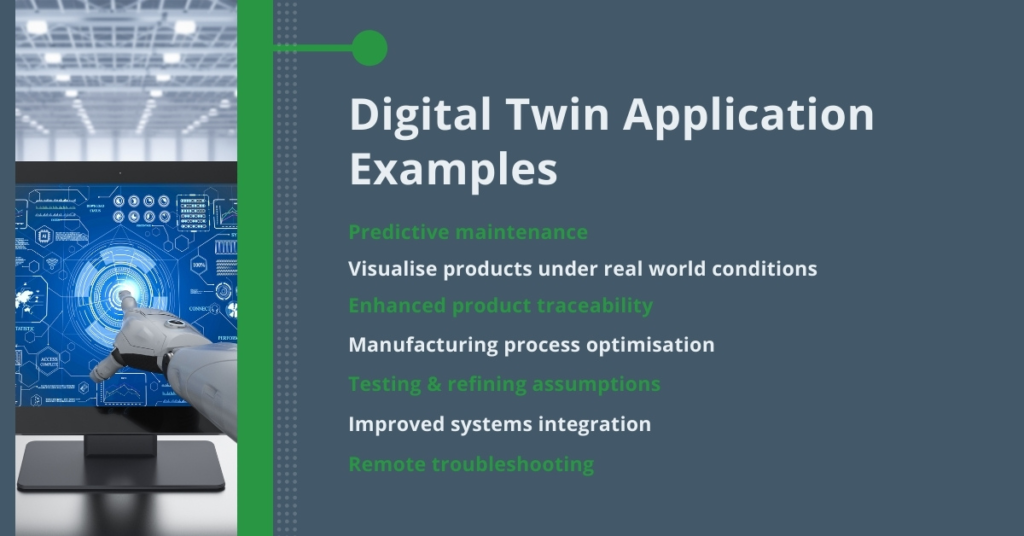The concept of digital twins has become a revolutionary trend in the manufacturing sector, offering a new way to optimize processes, reduce downtime, and enhance product quality. Digital twins are virtual representations of physical assets, processes, or systems, providing manufacturers with a real-time view of their operations. This advanced technology helps simulate, predict, and optimize manufacturing operations. Below are some of the key benefits digital twins bring to the manufacturing industry.

Enhanced Production Efficiency
One of the primary advantages of digital twins is their ability to improve production efficiency. By using real-time data from physical systems, digital twins allow manufacturers to monitor, analyze, and optimize production lines. This virtual representation of the factory floor can identify inefficiencies or bottlenecks in the production process, enabling manufacturers to make necessary adjustments without interrupting actual operations.
For instance, by observing a digital twin of a machine, manufacturers can predict potential breakdowns or malfunctions before they occur. This proactive approach reduces downtime and improves productivity. Additionally, manufacturers can simulate different production scenarios using digital twins to determine the most efficient workflow. These simulations allow the company to fine-tune processes and increase overall efficiency.
Improved Product Development and Design
Digital twins play a crucial role in the product development phase. Traditionally, product design involves multiple iterations of prototypes, which can be time-consuming and costly. However, digital twins enable manufacturers to test and refine products in a virtual environment before physical prototypes are created.
Through simulations, engineers can identify potential design flaws, optimize materials, and experiment with different configurations without incurring the cost of manufacturing actual parts. This not only speeds up the development cycle but also ensures that the final product meets the highest standards of quality and performance.
Moreover, digital twins enable manufacturers to monitor the behavior of products in real-world conditions after they have been launched. This feedback helps companies continuously improve product design, ensuring their offerings remain competitive in the market.
Predictive Maintenance and Reduced Downtime
Digital twins have a transformative impact on maintenance strategies. Traditionally, manufacturers followed preventive maintenance schedules, which often led to unnecessary downtime or unexpected machine failures. With digital twins, manufacturers can implement predictive maintenance strategies by monitoring equipment in real-time and predicting when it will require maintenance.
By analyzing data from sensors and the digital twin, companies can predict failures before they occur. This predictive maintenance reduces the likelihood of unplanned downtime and helps extend the lifespan of equipment. It also minimizes maintenance costs, as repairs are conducted only when needed, rather than on a fixed schedule.
In addition to predictive maintenance, digital twins can simulate maintenance procedures to determine the most efficient way to conduct repairs. This capability ensures that maintenance teams are well-prepared, leading to faster repairs and minimized disruptions to production.
Enhanced Supply Chain Management
The integration of digital twins into supply chain management helps manufacturers streamline logistics, optimize inventory, and reduce costs. By creating digital representations of supply chain processes, manufacturers can gain real-time insights into the movement of raw materials, components, and finished products.
Digital twins enable manufacturers to simulate various supply chain scenarios, helping them identify the most efficient routes and strategies for delivering products. This optimization can lead to faster deliveries and reduced transportation costs. Furthermore, digital twins can predict potential disruptions in the supply chain, allowing manufacturers to proactively address these issues before they impact production.
Additionally, manufacturers can use digital twins to improve inventory management. By monitoring real-time data from suppliers and production facilities, companies can optimize inventory levels and reduce the risk of stockouts or overstocking. This leads to a more agile and cost-effective supply chain.
Better Decision-Making through Data Analytics
Digital twins generate vast amounts of data that can be used for decision-making. By analyzing this data, manufacturers can gain insights into every aspect of their operations, from production efficiency to product quality and maintenance needs.
Data analytics from digital twins allow manufacturers to identify trends, correlations, and potential risks, leading to more informed decision-making. For example, manufacturers can predict customer demand more accurately, adjust production schedules accordingly, and minimize waste. Furthermore, digital twins can help manufacturers adapt to changing market conditions by providing real-time data on operational performance and efficiency.
Sustainability and Energy Efficiency
As sustainability becomes increasingly important in manufacturing, digital twins offer significant benefits in reducing environmental impact. By simulating production processes, manufacturers can identify areas where energy consumption can be reduced. Digital twins allow for continuous monitoring of energy usage, helping companies optimize processes to minimize waste and emissions.
In addition, manufacturers can simulate the use of sustainable materials and processes in a virtual environment, ensuring that these innovations do not compromise product quality. This approach not only improves environmental sustainability but also enhances cost savings by reducing energy and material costs.
Conclusion
Digital twins are revolutionizing the manufacturing industry by providing real-time data and insights that help optimize operations, improve product design, and reduce downtime. From predictive maintenance to enhanced supply chain management, digital twins offer numerous benefits that lead to greater efficiency, sustainability, and profitability. As the technology continues to evolve, it is likely to become an indispensable tool in the future of manufacturing.

